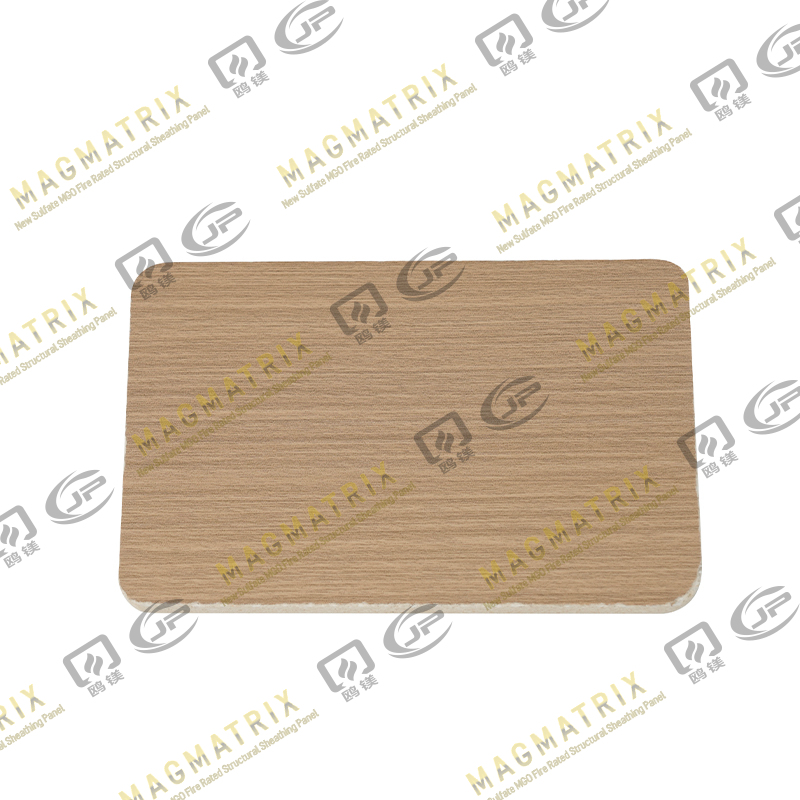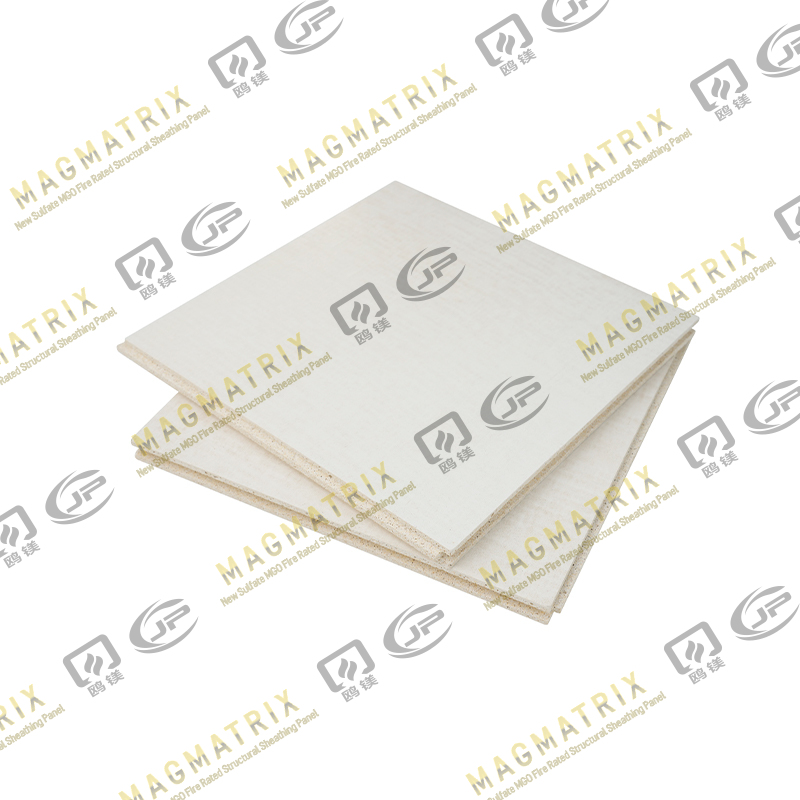Key Takeaways
Superior Fire Resistance: MgO board is inherently non-combustible and offers exceptional fire-rated performance, making it a safer choice for construction.
High Durability & Strength: Its robust composition provides superior impact resistance and structural integrity, outperforming many traditional building panels.
Excellent Moisture and Mold Resistance: Naturally resistant to water, mold, and mildew, MgO board is ideal for high-humidity environments and prevents moisture-related issues.
Eco-Friendly and Sustainable: Made from mineral-based components, MgO board is free from harmful chemicals, non-toxic, and has a lower environmental impact compared to conventional materials.
Versatile Applications: Suitable for a wide range of uses, including interior walls, ceilings, exterior sheathing, flooring underlayment, and specialty construction.
Easy to Work With: Despite its strength, MgO board can be cut, fastened, and finished using standard tools and techniques, simplifying the installation process.
Cost-Effective in the Long Run: While potentially having a higher upfront cost than some alternatives, its durability, longevity, and reduced maintenance needs can lead to significant long-term savings.

Magnesium Oxide Board, commonly known as MgO board, Mag board, or Magnesite board, is a factory-manufactured, mineral-based building material. It is a type of sheet material produced by combining reactive magnesia (MgO) with magnesium chloride (MgCl2), water, and various additives, creating a cementitious mixture that is then reinforced with fiberglass mesh. This innovative construction panel serves as an eco-friendly and high-performance alternative to traditional gypsum drywall, fiber-cement board, and even plywood for a multitude of interior and exterior applications.
Composition
The primary components of Magnesium Oxide Board include:
Magnesium Oxide (MgO): This is the main binder, derived from the mineral magnesite. When combined with magnesium chloride and water, it forms a strong, stable, and highly durable cementitious matrix.
Magnesium Chloride (MgCl2): Acts as the curing agent that reacts with magnesium oxide to form magnesium oxychloride cement, the core binder for the board.
Perlite: A lightweight aggregate often incorporated to reduce density, improve thermal insulation properties, and enhance fire resistance.
Wood Dust/Cellulose Fiber: Used as fillers and reinforcing agents, providing flexibility and improving the board's workability.
Fiberglass Mesh: Typically embedded within the board's layers, fiberglass mesh provides significant tensile strength, impact resistance, and dimensional stability, preventing cracking and delamination.
Other Additives: Small amounts of other proprietary additives may be included to optimize specific properties such as water repellency, curing time, and mold resistance.
Properties
MgO board boasts a unique set of properties that differentiate it from other building materials:
Non-Combustible and Fire Resistant: One of its most significant properties is its inherent non-combustibility. MgO board does not burn, contribute to fuel, or produce smoke when exposed to fire, often achieving fire ratings of up to 4 hours, depending on thickness and assembly.
High Strength-to-Weight Ratio: Despite being relatively lightweight, MgO board offers exceptional compressive and flexural strength, making it highly durable and resistant to impact.
Water and Moisture Resistance: Unlike gypsum-based products, MgO board does not swell, rot, or delaminate when exposed to moisture. While not entirely waterproof, it exhibits excellent resistance to water damage, making it suitable for wet areas.
Mold, Mildew, and Fungus Resistance: Due to its inorganic composition and resistance to moisture, MgO board creates an unsuitable environment for the growth of mold, mildew, and fungi.
Dimensional Stability: It exhibits minimal expansion or contraction with changes in temperature and humidity, ensuring a stable and long-lasting finish.
Sound Insulation: The density and composition of MgO board contribute to good acoustic dampening properties, helping to reduce sound transmission.
Pest Resistance: Its mineral composition makes it unattractive to insects and rodents.
Non-Toxic and Eco-Friendly: MgO board is free from asbestos, formaldehyde, silica, and other harmful chemicals. It is considered a green building material, as its production involves a lower energy footprint than cement and it's derived from abundant natural minerals.
Breathability: While water-resistant, it allows for vapor permeability, which can help in managing moisture within wall cavities.
Workability: Despite its strength, it can be cut with standard tools, fastened with screws, and finished with common construction techniques.
Benefits of Magnesium Oxide Board

Magnesium Oxide Board offers a compelling array of advantages that make it an increasingly popular choice for a wide range of construction projects. Its unique composition translates into performance benefits that often surpass those of traditional building materials.
Fire Resistance
One of the most significant benefits of MgO board is its unparalleled fire resistance. Unlike many common building materials that contribute to flame spread or produce toxic smoke when burned, MgO board is inherently non-combustible.
Non-Combustible Material: MgO board does not ignite, burn, or contribute fuel to a fire. Its mineral composition means it will not release smoke or toxic fumes, which are often a greater hazard in a fire than the flames themselves.
High Fire Rating: Depending on its thickness and the specific assembly it's part of, MgO board can achieve fire ratings of up to four hours, significantly exceeding the fire resistance of gypsum drywall. This makes it an ideal material for fire-rated walls, ceilings, and shafts in both residential and commercial buildings, enhancing occupant safety and structural integrity during a fire event.
Protection of Structural Elements: By forming a protective barrier, MgO board can help to delay the spread of fire, providing more time for evacuation and reducing damage to the building's structural components.
Durability
MgO board's robust composition contributes to its exceptional durability and longevity, making it a reliable choice for high-traffic areas and demanding applications.
Impact Resistance: The dense and rigid nature of MgO board makes it highly resistant to impact damage, such as dents, punctures, and abrasions, which are common issues with softer materials like drywall.
High Compressive and Flexural Strength: It maintains its structural integrity under significant load, making it suitable for applications requiring strong, stable surfaces, including subflooring and shear walls.
Long Lifespan: Due to its resistance to fire, moisture, pests, and rot, MgO board has a much longer service life than many conventional building materials, reducing the need for frequent repairs or replacements.
Moisture Resistance
Water and moisture can be detrimental to many building materials, leading to mold growth, structural damage, and costly repairs. MgO board stands out for its superior resistance to moisture.
Does Not Swell or Delaminate: Unlike gypsum-based products or plywood that can swell, warp, or disintegrate when exposed to water, MgO board retains its dimensional stability.
Inhibits Mold and Mildew Growth: Its inorganic composition and resistance to moisture create an environment where mold, mildew, and fungi cannot thrive. This is particularly beneficial in humid climates, bathrooms, kitchens, basements, and other areas prone to moisture.
Breathability: While resistant to liquid water, MgO board allows for vapor permeability, helping to manage moisture within wall cavities and reduce the risk of condensation-related issues.
Eco-Friendly
In an era of increasing environmental consciousness, MgO board offers a sustainable alternative for construction.
Non-Toxic and Safe: It is produced without harmful chemicals such as asbestos, formaldehyde, benzene, and crystalline silica. This results in healthier indoor air quality for occupants and a safer working environment for installers.
Sustainable Raw Materials: Magnesium oxide is derived from abundant natural mineral resources. The manufacturing process for MgO board typically has a lower carbon footprint compared to the production of Portland cement.
Recyclable: At the end of its lifespan, MgO board can be crushed and recycled as a soil amendment, further reducing its environmental impact.
Table: Key Benefits of Magnesium Oxide Board
| Benefit Category |
Specific Advantage |
Description |
| Fire Resistance |
Non-Combustible |
Does not ignite, burn, or contribute fuel to a fire; releases no smoke or toxic fumes. |
|
High Fire Rating |
Achieves up to 4-hour fire ratings, significantly enhancing safety and property protection |
| Durability |
High Impact Resistance |
Withstands dents, punctures, and abrasions better than drywall, ideal for high-traffic areas. |
|
Exceptional Strength |
Offers superior compressive and flexural strength for stable and long-lasting structures. |
|
Longevity |
Resists rot, pests, and degradation, leading to a longer service life and reduced maintenance. |
| Moisture Resistance |
Water & Moisture Resistant |
Maintains dimensional stability and integrity even when exposed to water; does not swell, warp, or delaminate. |
|
Mold, Mildew & Fungus Proof |
Inhibits the growth of biological contaminants due to its inorganic, moisture-resistant properties. |
| Eco-Friendly |
Non-Toxic & Safe |
Free from asbestos, formaldehyde, silica, and other harmful chemicals, ensuring better indoor air quality. |
|
Sustainable Resources & Production |
Made from abundant natural minerals with a lower energy manufacturing process compared to traditional cement-based products; recyclable. |
Applications of Magnesium Oxide Board

The versatility and superior properties of Magnesium Oxide Board allow it to be effectively used in a wide array of construction applications, both interior and exterior. Its performance characteristics make it suitable for environments where fire safety, moisture resistance, and durability are paramount.
Walls and Ceilings
MgO board is an excellent choice for interior walls and ceilings in various settings, replacing traditional drywall with a more robust and resilient option.
Interior Partitions: Ideal for creating non-load-bearing interior walls in residential, commercial, and industrial buildings. Its smooth surface provides an excellent base for paint, wallpaper, or other finishes.
Wet Areas: Due to its high moisture resistance, MgO board is perfectly suited for use in bathrooms, kitchens, laundries, and basements where humidity and water splash are common. It effectively prevents mold and mildew growth in these susceptible areas.
Fire-Rated Assemblies: For applications requiring specific fire ratings, such as firewalls, stairwells, and elevator shafts, MgO board significantly enhances safety and compliance.
Ceilings: Its lightweight yet strong nature makes it suitable for ceiling applications, offering sound dampening and fire protection overhead.
Sheathing and Siding
Beyond interiors, MgO board's durability and weather resistance make it a valuable material for exterior applications.
Exterior Wall Sheathing: As structural sheathing, it provides excellent bracing, fire protection, and a stable substrate for various exterior cladding materials, including stucco, brick, stone, and siding. Its breathability also helps in managing moisture within the wall cavity.
Fascia and Soffit: Its resistance to moisture and pests makes it a durable material for external trim applications like fascia boards and soffits, requiring minimal maintenance.
Rain Screen Systems: MgO board can serve as a non-combustible and moisture-resistant backer board in rain screen systems, contributing to improved building envelope performance.
Specialty Uses
The unique attributes of MgO board extend its utility to numerous specialized construction and industrial applications.
Flooring Underlayment: Its strength, dimensional stability, and resistance to water make it an ideal underlayment for various flooring types, including tile, vinyl, and wood, especially in areas prone to moisture.
Subflooring: In some applications, thicker MgO boards can serve as a primary subflooring material, offering a solid, fire-resistant, and durable base.
Shaft Liners: For elevator shafts, mechanical shafts, and other vertical enclosures requiring high fire ratings, MgO board provides a robust and non-combustible lining.
Tile Backer Board: It is an excellent substrate for tiling in showers, baths, and kitchen backsplashes, surpassing the performance of green board or even cement board in many aspects due to its superior mold resistance and stability.
Structural Insulated Panels (SIPs): MgO board can be used as the exterior skin for SIPs, providing a strong, fire-resistant, and insulated building component.
Cleanrooms and Hospitals: Its inorganic, non-toxic, and mold-resistant properties make it suitable for sensitive environments where hygiene and indoor air quality are critical.
Furniture and Cabinetry: In some specialized furniture or cabinetry applications, particularly where fire resistance or moisture resistance is required, MgO board can be used.
Installation of Magnesium Oxide Board

Installing Magnesium Oxide Board is generally straightforward, aligning with many common construction practices. However, understanding its unique characteristics and following recommended procedures will ensure optimal performance and longevity.
Tools and Materials
Before beginning installation, gather the necessary tools and materials:
Cutting Tools: A circular saw with a diamond blade or a carbide-tipped blade for cleaner cuts. For simple cuts, a utility knife and straightedge can be used, similar to scoring drywall.
Fastening Tools: A screw gun or drill with appropriate drive bits.
Fasteners: Corrosion-resistant screws (e.g., galvanized, stainless steel) specifically designed for cement board or exterior use, with self-countersinking heads. Length should ensure adequate penetration into framing.
Measuring and Marking Tools: Tape measure, carpenter's square, pencil.
Safety Gear: Dust mask (N95 or better) for cutting, safety glasses, gloves.
Joint Treatment: Alkali-resistant fiberglass mesh tape and a setting-type joint compound (thin-set mortar or a specialized MgO board joint compound).
Sealants (for wet areas/exterior): Alkali-resistant sealant or caulk for joints and penetrations.
Cutting and Handling
MgO board is denser than drywall but can be cut with relative ease.
Scoring and Snapping: For lighter gauge boards (typically up to 1/2 inch or 12mm), a utility knife can be used to score deeply along a straightedge several times. Then, the board can be snapped along the score line. Finish by cutting the fiberglass mesh on the back.
Saw Cutting: For thicker boards or for more precise cuts, a circular saw is recommended. Use a dust-collecting saw and always wear a dust mask and safety glasses, as cutting can generate fine mineral dust. A diamond blade or a sharp carbide-tipped blade will provide the cleanest cut and reduce wear on the blade.
Hole Cutting: Use a hole saw for circular openings (e.g., for pipes or electrical boxes) or a jigsaw for irregular shapes.
Handling: While durable, MgO boards can be heavy. Handle them carefully to avoid chipping edges or corners, especially during transport and positioning. Store them flat to prevent warping.
Fastening
Proper fastening is crucial for the stability and performance of MgO board.
Framing: Ensure the framing (wood or metal) is plumb, level, and adequately spaced according to local building codes and board manufacturer recommendations (typically 16-inch or 24-inch on center).
Screw Type: Use corrosion-resistant screws (e.g., galvanized, stainless steel, or specifically coated fasteners) with a self-countersinking head. This is especially important for exterior applications or wet areas to prevent rust bleed-through.
Spacing: Fasten screws every 6 to 8 inches along the perimeter and every 12 inches in the field of the board. Maintain a distance of at least 1/2 inch from the board edges to prevent cracking.
Sinking Screws: Drive screws until the head is flush with or slightly below the board surface, but do not overtighten, which can strip the board or break the surface.
Board Gap: Leave a slight gap (e.g., 1/8 inch or 3mm) between adjacent boards and around door/window openings to allow for minor expansion and contraction and for proper joint treatment.
Finishing
Finishing MgO board is similar to finishing traditional drywall, with some key considerations.
Joint Treatment: For seams, use alkali-resistant fiberglass mesh tape embedded in a thin layer of setting-type joint compound (often a thin-set mortar or a specialized MgO board compound). Allow the first coat to dry completely before applying subsequent coats.
Feathering: Apply additional coats of joint compound, feathering out the edges to create a smooth, seamless transition. Lightly sand between coats as needed, using fine-grit sandpaper.
Corners: For interior corners, use paper tape or fiberglass mesh tape. For exterior corners, metal or plastic corner bead can be used, fastened with compound or screws.
Priming: Before painting or applying other finishes, it's highly recommended to prime the entire surface of the MgO board with a high-quality alkali-resistant primer. This ensures proper adhesion of the finish coat and helps prevent any potential "ghosting" or flashing from the board's natural alkalinity.
Finishes: MgO board accepts various finishes, including paint, wallpaper, stucco, tile, and veneers. Ensure that any adhesives or setting materials used (especially for tile) are suitable for use with cementitious backer boards.
Magnesium Oxide Board Comparison
To fully appreciate the advantages of Magnesium Oxide Board, it's helpful to compare its properties and performance against other commonly used building materials. While each material has its specific strengths and ideal applications, MgO board often offers a unique combination of benefits.
Drywall (Gypsum Board)
Drywall is the most common interior wall and ceiling material, known for its ease of installation and smooth finish.
Fire Resistance: Standard drywall offers limited fire resistance (typically 30-60 minutes for a single layer). Fire-rated gypsum board provides better performance, but generally less than MgO board for equivalent thickness.
Moisture Resistance: Standard drywall is highly susceptible to water damage, swelling, and mold growth. Even "green board" or moisture-resistant drywall only offers limited protection. MgO board vastly outperforms it in wet environments.
Durability: Drywall is relatively soft and prone to dents, punctures, and impact damage, requiring frequent repairs in high-traffic areas. MgO board is significantly more durable and impact-resistant.
Toxicity: While standard drywall is generally safe, it can be a food source for mold when wet. MgO board is inorganic and naturally mold-resistant.
Workability: Drywall is easier to cut and lighter to handle than MgO board, which can be an advantage for quick installation.
Cement Board
Cement board is a common choice for wet areas like bathrooms and kitchens, especially as a tile backer.
Fire Resistance: Cement board is non-combustible, similar to MgO board, offering good fire resistance.
Moisture Resistance: It is highly moisture-resistant and does not rot or swell. However, it can still harbor mold on its surface if moisture is present over time, unlike MgO board's inherent mold resistance.
Durability: Cement board is very strong and durable, similar to MgO board, making it excellent for tile applications. It can be brittle and prone to chipping during handling.
Weight & Workability: Cement board is significantly heavier and harder to cut than MgO board, often requiring specialized tools like score-and-snap cutters or diamond-tipped saws, which can be more labor-intensive.
Eco-Friendliness: While inorganic, traditional cement production has a higher carbon footprint than MgO board production.
Plywood (OSB, Plywood Sheathing)
Plywood and Oriented Strand Board (OSB) are widely used for structural sheathing, subflooring, and general construction.
Fire Resistance: Wood-based products are highly combustible and do not offer significant fire resistance unless specially treated, which is costly. MgO board is non-combustible.
Moisture Resistance: Plywood and OSB are highly susceptible to water damage, swelling, delamination, and mold/rot when exposed to moisture. Exterior-grade products offer some resistance but are not waterproof. MgO board is vastly superior.
Durability: While strong for structural purposes, plywood can delaminate or decay over time, especially if exposed to moisture or pests. MgO board offers longer-term durability in varied conditions.
Pest Resistance: Wood is susceptible to termites and other wood-boring insects. MgO board is inorganic and pest-proof.
Eco-Friendliness: While wood is a renewable resource, the production of plywood/OSB often involves resins that can off-gas VOCs.
MOS Board (Magnesium OxySulfate Board)
It's important to distinguish between MgO (Magnesium Oxide) board and MOS (Magnesium OxySulfate) board, as both are sometimes referred to broadly as "mag board," but have different chemical binders. MOS board uses magnesium sulfate as the binder, while MgO board (the focus of this article) uses magnesium chloride.
Binder Chemistry: The key difference lies in the curing agent. MgO board uses MgCl2, forming magnesium oxychloride cement. MOS board uses MgSO4 (magnesium sulfate), forming magnesium oxysulfate cement.
Performance Differences: While both offer fire and moisture resistance, there can be subtle differences. Some MOS boards may have slightly different long-term stability or efflorescence characteristics depending on formulation and manufacturing quality. Generally, MgO boards made with proper magnesium chloride chemistry are known for their high strength, dimensional stability, and lack of efflorescence, which historically has been a concern with poorly manufactured mag boards. Reputable MgO board products prioritize chloride content control to prevent issues.
Table: Magnesium Oxide Board vs. Common Building Materials
| Feature |
Magnesium Oxide Board (MgO) |
Drywall (Gypsum Board) |
Cement Board |
Plywood/OSB |
| Primary Use |
Walls, Ceilings, Sheathing, Backer, Specialty |
Interior Walls, Ceilings |
Tile Backer (wet areas), Exterior Siding (some types) |
Structural Sheathing, Subflooring, Substrate |
| Fire Resistance |
Excellent (Non-Combustible, High Fire Rating) |
Poor to Good (Standard burns, fire-rated options available) |
Excellent (Non-Combustible) |
Poor (Combustible, no inherent fire rating) |
| Moisture/Mold |
Excellent (Resistant, inhibits mold growth) |
Poor (Swells, molds easily) |
Good (Water-resistant, but can support surface mold) |
Poor (Swells, delaminates, molds/rots) |
| Durability/Impact |
Excellent (High strength, impact resistant) |
Poor (Easily dented/punctured) |
Good (Strong, but brittle) |
Good (Structural, but can delaminate, susceptible to pests/rot) |
| Weight |
Medium to Heavy |
Light to Medium |
Heavy |
Medium to Heavy |
| Workability/Cut |
Good (Score & snap, circular saw with diamond blade) |
Excellent (Easy score & snap) |
Fair (Hard, requires specialized tools, dusty) |
Good (Saws easily) |
| Eco-Friendliness |
Excellent (Non-toxic, sustainable minerals, low carbon) |
Fair (Recyclable, but uses paper/gypsum, can mold) |
Fair (High energy to produce cement) |
Varies (Renewable resource, but resins can off-gas, not recyclable if treated) |
| Indoor Air Quality |
Excellent (No VOCs, formaldehyde-free) |
Good (Low VOCs in modern types, but can mold) |
Excellent (No VOCs) |
Fair (Can off-gas formaldehyde from resins) |
| Pest Resistance |
Excellent (Inorganic, pest-proof) |
Good (Not a food source, but can harbor) |
Excellent (Inorganic, pest-proof) |
Poor (Susceptible to termites, rodents) |
Disadvantages and Maintenance of Magnesium Oxide Board

While Magnesium Oxide Board offers numerous compelling advantages, it's also important to acknowledge its potential limitations and understand proper care to ensure its long-term performance.
Limitations
Despite its many benefits, MgO board is not without its specific considerations:
Cost: The upfront cost of MgO board can sometimes be higher than traditional drywall or even some types of cement board. However, this is often offset by its long-term durability, reduced maintenance, and superior performance in critical areas.
Availability: While growing in popularity, MgO board may not be as readily available in all local hardware stores as ubiquitous materials like drywall or plywood. It might require ordering from specialized suppliers.
Quality Variance: Not all MgO boards are created equal. The quality can vary significantly between manufacturers, particularly concerning the precise blend of magnesium oxide and chloride, and the presence of proper fiberglass reinforcement. Poorly manufactured boards can be prone to issues like efflorescence (a white powdery residue that can appear on the surface) or cracking. It's crucial to source from reputable suppliers who adhere to quality control standards and provide performance data.
Installation Learning Curve: While generally workable, installers accustomed solely to drywall may find a slight learning curve with MgO board's density and specific fastening and jointing requirements. Using the correct, corrosion-resistant fasteners and proper joint compounds is essential to prevent issues.
Weight: Thicker MgO boards can be heavier than equivalent drywall sheets, potentially requiring two people for handling and installation, similar to cement board.
Dust from Cutting: Cutting MgO board, especially with power saws, can generate fine mineral dust. While non-toxic, it's an irritant and requires proper ventilation and respiratory protection (N95 mask).
Care and Longevity
With proper installation and minimal care, MgO board is designed for exceptional longevity.
General Cleaning: For interior applications, finished MgO board surfaces (painted, tiled, etc.) can be cleaned with standard household cleaners appropriate for the surface finish. As the board itself is inorganic, it doesn't harbor biological growth.
Addressing Surface Issues: If efflorescence occurs on an unfinished board (a white crystalline deposit), it can usually be brushed off. This issue is more common with lower-quality boards or if the board is exposed to excessive moisture during curing or storage. Applying a suitable primer before finishing helps seal the surface.
Maintaining Finish: The longevity of the MgO board itself is very high, but the lifespan of the surface finish (paint, wallpaper, tile grout) will depend on the quality of the finish and exposure conditions. Repainting or re-grouting will be necessary as with any other wall material.
Protection from Prolonged Standing Water: While highly moisture-resistant, MgO board is not a waterproofing membrane. In applications where it will be subjected to prolonged standing water or constant saturation (e.g., inside a shower pan), it still requires a proper waterproofing system applied over it, just like cement board.
Exterior Applications: For exterior sheathing, ensure it is properly integrated into the building's weather barrier system, including appropriate flashing and drainage, to protect the overall wall assembly. While resistant to weather, continuous direct exposure to UV or precipitation without a protective cladding should be avoided unless the specific product is rated for such exposure.
Repair: Minor damage (e.g., small holes or dents) can be repaired using standard patching compounds or setting-type joint compounds, similar to drywall repair. For larger damages, sections of the board can be cut out and replaced.
FAQ
Here are answers to some of the most frequently asked questions about Magnesium Oxide Board:
Q: How do you cut magnesium oxide board?
A: Magnesium Oxide Board can be cut using a utility knife for thinner boards (score deeply and snap, then cut the fiberglass mesh on the back). For thicker boards or more precise cuts, a circular saw with a diamond blade or a sharp carbide-tipped blade is recommended. Always use appropriate safety gear, including a dust mask and safety glasses, as cutting generates fine dust.
Q: Can you paint or tile over magnesium oxide board?
A: Yes, MgO board provides an excellent surface for painting and tiling. Before painting, it is highly recommended to prime the board with an alkali-resistant primer to ensure good adhesion and prevent potential issues with the board's alkalinity affecting the paint finish. When tiling, use a high-quality thin-set mortar suitable for cementitious boards, and ensure proper joint treatment and waterproofing in wet areas.
Q: What screws should you use for installation?
A: For installing MgO board, use corrosion-resistant screws such as galvanized, stainless steel, or specifically coated fasteners designed for cement board or exterior use. These screws should have self-countersinking heads to sit flush with the board's surface without breaking it. The length of the screw should be sufficient to penetrate the framing by at least 1 inch (25mm).
Q: Is magnesium oxide board safe for indoor air quality?
A: Yes, MgO board is considered an excellent choice for indoor air quality. It is inherently non-toxic and manufactured without harmful chemicals such as asbestos, formaldehyde, benzene, and crystalline silica. Its inorganic composition also means it does not promote mold growth, further contributing to a healthier indoor environment.
Q: How do you store magnesium oxide boards before installation?
A: To maintain their integrity and dimensional stability, MgO boards should be stored flat on a level surface, elevated off the ground, and in a dry, covered area. Protect them from direct sunlight, rain, or excessive humidity. Proper storage prevents warping, moisture absorption, and damage to the board edges.
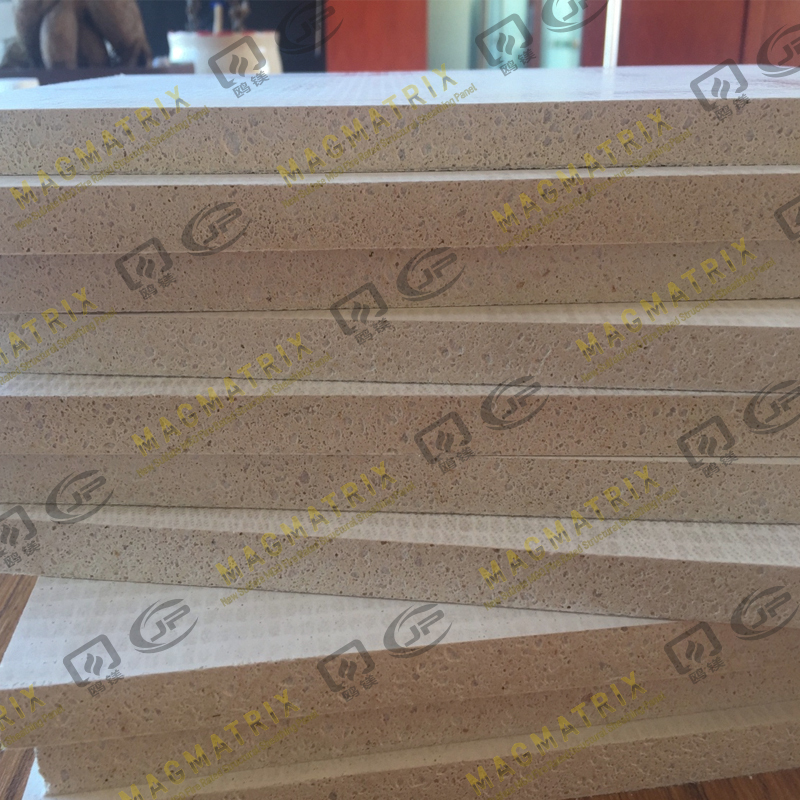 BMSC 517 New Sulfate MgO Board
BMSC 517 New Sulfate MgO Board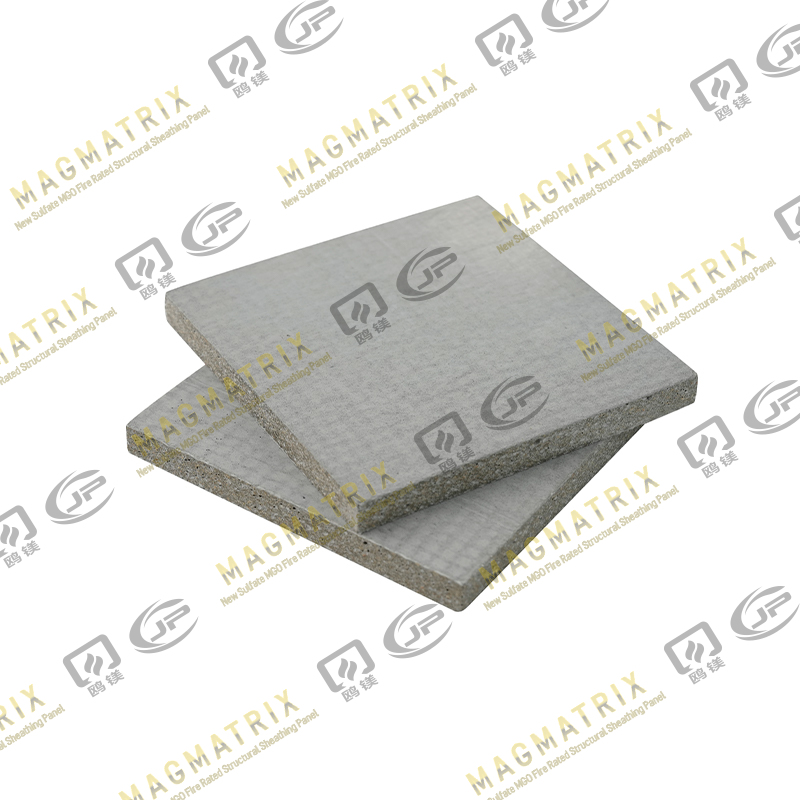 Multi-Support MgO Wall Sheathing Board
Multi-Support MgO Wall Sheathing Board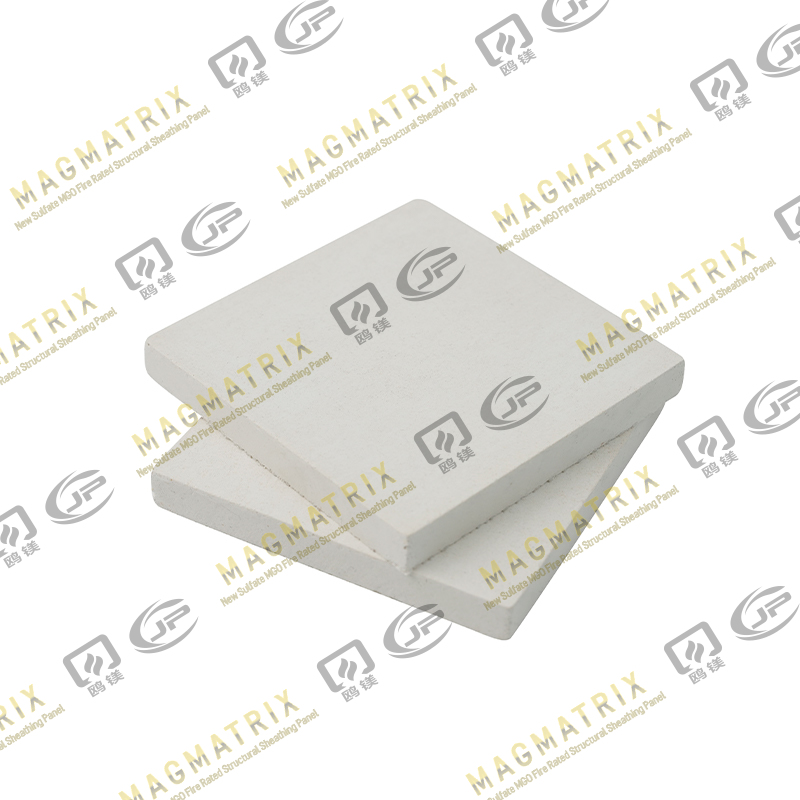 Perseverance MgO Wall Sheathing Board
Perseverance MgO Wall Sheathing Board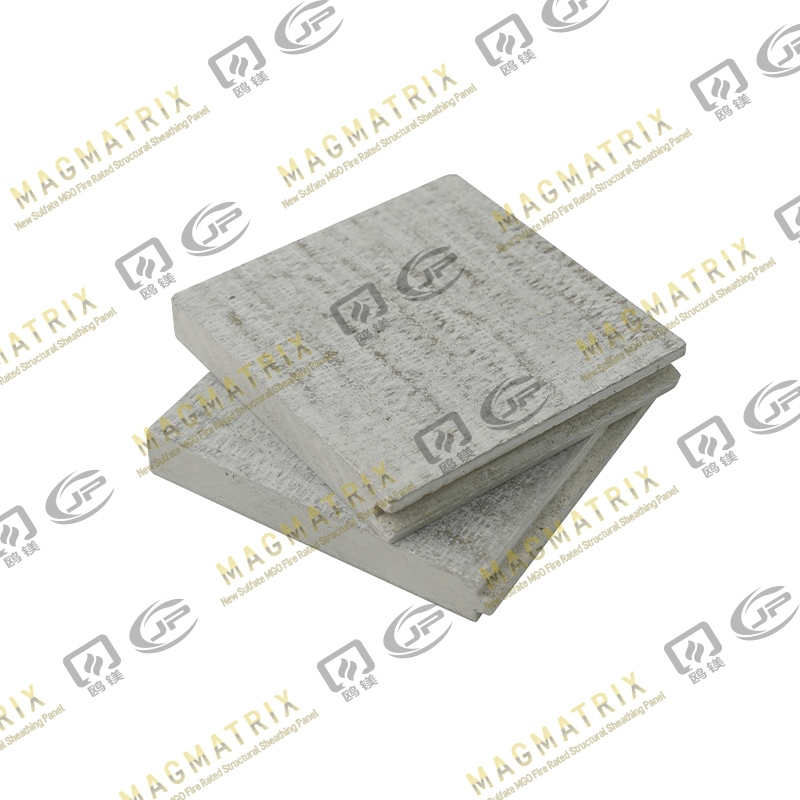 Multi-Support MgO Subfloor Sheathing Board
Multi-Support MgO Subfloor Sheathing Board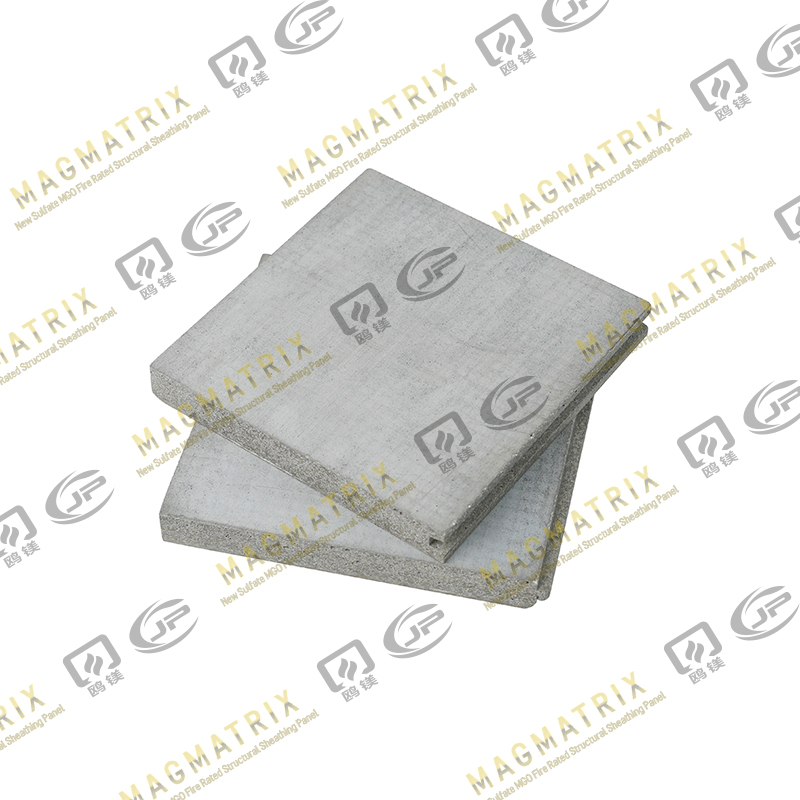 Perseverance MgO Subfloor Sheathing Board
Perseverance MgO Subfloor Sheathing Board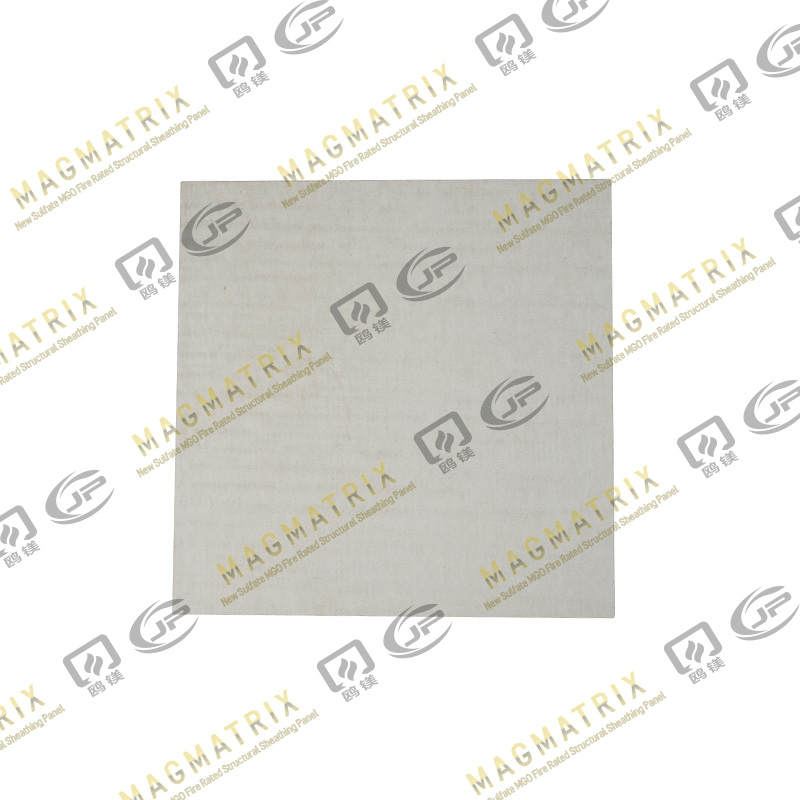 MagMatrix MgO Underlayment Panel/board
MagMatrix MgO Underlayment Panel/board


 English
English русский
русский Español
Español
